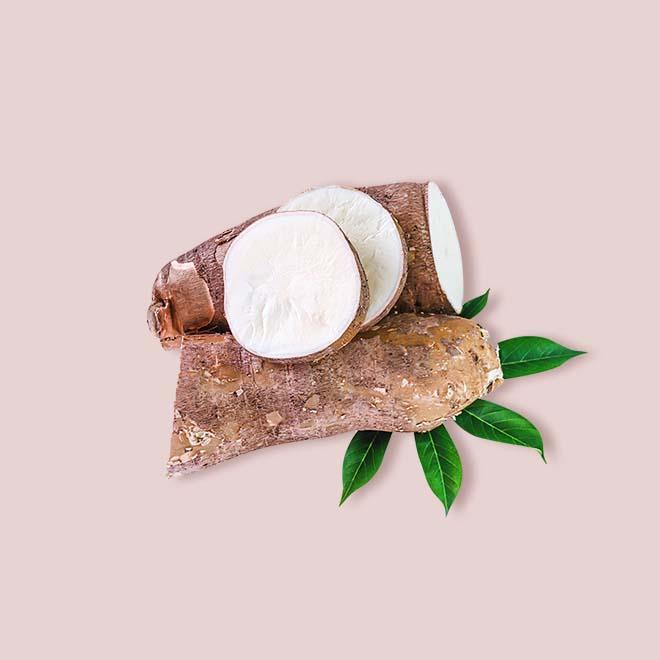Cassava




Cassava, also known as manioc, yuca, and mandioca, is a starchy tuberous root that serves as a staple food for millions around the world. Cassava provides essential carbohydrates, calories, and some important vitamins and minerals. Its ability to grow in marginal soils and withstand droughts makes it a vital food security crop in Africa and Asia, where it nourishes millions.
From savory cassava bread and dumplings to sweet tapioca pearls and desserts, cassava shines in countless culinary creations. It can be used as a fresh food item, dried and frozen.
Fresh cassava typically appears in two forms: whole roots or peeled, cut chunks. Whole roots offer more control over freshness but require peeling and processing yourself. Pre-cut versions might be easier to handle but have potentially shorter shelf lives.
Choose cassava with firm, smooth skin, free from wrinkles, bruises, or soft spots. Smaller cassava roots tend to be sweeter and less fibrous than larger ones. Fresh cassava is most readily available in Latin American and Caribbean markets, Asian grocery stores, or specialty produce sections.
Store unpeeled whole cassava in a cool, dry place with good air circulation, like a pantry or basement, for up to 2 weeks. Avoid storing near ripening fruits that release ethylene gas, which can accelerate spoilage.
Cassava can be used as a natural dye. The inner bark of cassava stems can be boiled and used to create vibrant orange and brown dyes for textiles, baskets, and crafts.
Dried cassava is lightweight, durable, and highly nutritious, making it a suitable ingredient for emergency rations and disaster preparedness kits.
Cassava has a presence of cyanogenic glycosides, natural compounds that release cyanide when processed. Indigenous communities have developed various techniques to safely process cassava for centuries. These include soaking, grating, fermenting, and cooking, which break down or remove the cyanogenic glycosides, rendering the cassava safe for consumption.
Cassava peel contains toxins, so wear gloves and avoid direct contact with your eyes or mouth while peeling. Fresh cassava needs proper processing to remove toxins. Boiling, grating, or frying are common methods.
Cassava can release a lot of moisture during cooking. Be mindful of this when adding liquids to recipes to avoid ending up with a mushy dish.
Cassava is a rich source of carbohydrates, primarily starch, providing readily available energy for the body.
While not as densely packed with micronutrients as some vegetables, cassava still offers essential vitamins and minerals like vitamin C, potassium, manganese, and thiamine.
For individuals with gluten sensitivities or Celiac disease, cassava flour and tapioca products offer a viable and delicious alternative to wheat-based flours.
Corrections or improvements? Email us at
content@sidechef.com